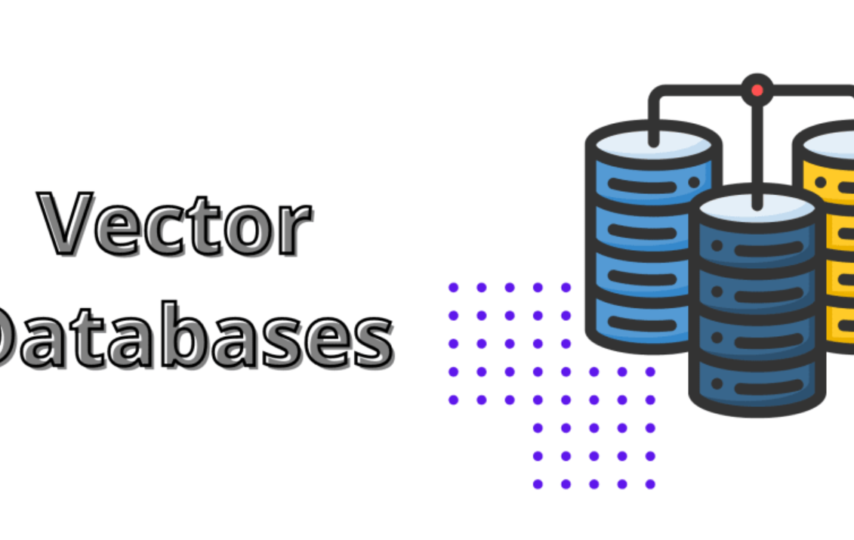In the ever-evolving landscape of data management, traditional relational databases have long been the go-to solution for storing and retrieving structured information. However, as the volume, variety, and velocity of data continue to grow exponentially, new approaches are required to meet the demands of modern applications. This is where vector databases come into play, revolutionizing the way we store and retrieve data. In this blog post, we will explore the rise of vector databases, their advantages, and how they are reshaping the data storage and retrieval landscape.
The Traditional Database Challenge
Traditional relational databases have served us well for decades, offering a structured and organized way to store data in tables with rows and columns. They have been the cornerstone of many business applications, providing ACID (Atomicity, Consistency, Isolation, Durability) compliance and robust data integrity. However, these databases have limitations that become apparent in the era of big data and complex data structures.
- Scalability: Traditional databases struggle to handle massive amounts of data and high-concurrency workloads efficiently.
- Data Variety: As organizations collect diverse types of data, including text, images, audio, and more, traditional databases are ill-suited for managing unstructured and semi-structured data.
- Query Performance: Complex queries, especially those involving similarity searches and machine learning algorithms, can be slow and resource-intensive in traditional databases.
- Real-time Requirements: Many modern applications require real-time data access and analysis, which is challenging to achieve with traditional databases.
- Cost: The cost of scaling traditional databases both in terms of hardware and software licenses can be prohibitive for many organizations.
Enter Vector Databases
Vector databases are a relatively new paradigm in data management that address the limitations of traditional databases while introducing several key advantages:
1. Vector Representation: Vector databases store data using vector representations. In this context, a vector is a mathematical structure that can represent a wide range of data types, including numbers, text, images, and more. These vectors are often high-dimensional and capture the essence of the data they represent.
2. Similarity Search: One of the most compelling features of vector databases is their ability to perform similarity searches efficiently. Traditional databases struggle with similarity queries, but vector databases excel in finding similar items within vast datasets. This capability is invaluable in applications such as content recommendation, image retrieval, and natural language processing.
3. High-dimensional Data: Vector databases are well-suited for high-dimensional data, making them ideal for applications that deal with complex data structures, such as sensor data, genomic data, and multimedia content.
4. Real-time Processing: Vector databases are designed for real-time data processing. They can handle streaming data and provide low-latency access to data, making them essential for applications that require instant insights and responses.
5. Machine Learning Integration: Vector databases seamlessly integrate with machine learning workflows. Data scientists and engineers can leverage the vector representations for model training and inference, leading to more accurate and efficient machine learning pipelines.
6. Scalability: Scalability is a fundamental feature of vector databases. They can handle massive datasets and distribute processing across multiple nodes or clusters, ensuring that they can grow with your data needs.
7. Cost-effectiveness: Vector databases often offer cost-effective solutions, especially when compared to the expensive licensing fees associated with traditional databases. Open-source vector databases, in particular, have gained popularity for their affordability and flexibility.
Use Cases of Vector Databases
The rise of vector databases has paved the way for a wide range of applications across various industries:
1. E-commerce and Recommendations: Vector databases power recommendation systems by efficiently matching user preferences with a vast catalog of products or content. This is seen in platforms like Amazon and Netflix, which use vector-based algorithms to suggest products or movies.
2. Image and Video Search: Image and video retrieval have been transformed by vector databases. Users can now search for visually similar images and videos within extensive collections, enabling applications like reverse image search and content management for media companies.
3. Natural Language Processing (NLP): In the field of NLP, vector databases are used to store and search text data efficiently. This is particularly valuable for semantic search and chatbot applications that require quick and accurate responses.
4. Internet of Things (IoT): Vector databases play a crucial role in IoT applications, where they manage and analyze sensor data in real-time. This is essential for monitoring and controlling devices in smart homes, factories, and cities.
5. Healthcare and Life Sciences: In healthcare, vector databases assist in managing and analyzing genomic data, patient records, and medical images. They contribute to the advancement of personalized medicine and disease diagnosis.
Challenges and Considerations
While vector databases offer numerous benefits, they also come with their set of challenges and considerations:
1. Data Quality: Vector representations are only as good as the data they are derived from. Ensuring data quality and preprocessing is crucial to obtain meaningful results from vector databases.
2. Storage Requirements: High-dimensional vectors can consume substantial storage space. Efficient storage techniques and compression methods are essential to manage storage costs.
3. Indexing Strategies: Choosing the right indexing strategy is critical for optimizing query performance in vector databases. Different applications may require different indexing approaches.
4. Privacy and Security: As with any database, vector databases must address privacy and security concerns, especially when dealing with sensitive data.
5. Expertise: Utilizing vector databases effectively may require specialized expertise in vector modeling, indexing techniques, and query optimization.
The Future of Vector Databases
As data continues to grow in complexity and volume, vector databases are poised to play an even more significant role in data management. Some trends to watch for in the future include:
- Quantum Computing Integration: Vector databases may benefit from quantum computing’s capabilities to perform complex calculations and searches even more efficiently.
- Explainable AI (XAI): Advancements in vector databases may lead to more transparent and interpretable machine learning models, addressing the challenge of understanding AI decisions.
- Federated Learning: Vector databases may become key components in federated learning setups, enabling distributed machine learning across organizations while preserving data privacy.
Get Started with Vector Databases Using DataStax
As generative AI continues to advance across various industries, there’s a growing need for a dedicated approach to managing the vast amounts of data that drive contextual decision-making. Vector databases are purpose-built to tackle this challenge and offer a specialized solution for handling vector embeddings in AI applications. This is where the true strength of vector databases lies: enabling the management of contextual data, whether at rest or in motion, to provide core memory recall for AI processing.
While this might initially sound complex, DataStax’s Vector Search capabilities on AstraDB simplifies the process for you. It offers a fully integrated solution that includes all the necessary components for managing contextual data seamlessly. From the foundational nervous system built on data pipelines to embeddings and core memory storage and retrieval, you can access and process data effortlessly within an intuitive cloud platform. Get started for free today!
About the Author
William McLane, CTO Cloud, DataStax
With over 20+ years of experience in building, architecting, and designing large-scale messaging and streaming infrastructure, William McLane has deep expertise in global data distribution. William has history and experience building mission-critical, real-world data distribution architectures that power some of the largest financial services institutions to the global scale of tracking transportation and logistics operations. From Pub/Sub, to point-to-point, to real-time data streaming, William has experience designing, building, and leveraging the right tools for building a nervous system that can connect, augment, and unify your enterprise data and enable it for real-time AI, complex event processing and data visibility across business boundaries.




